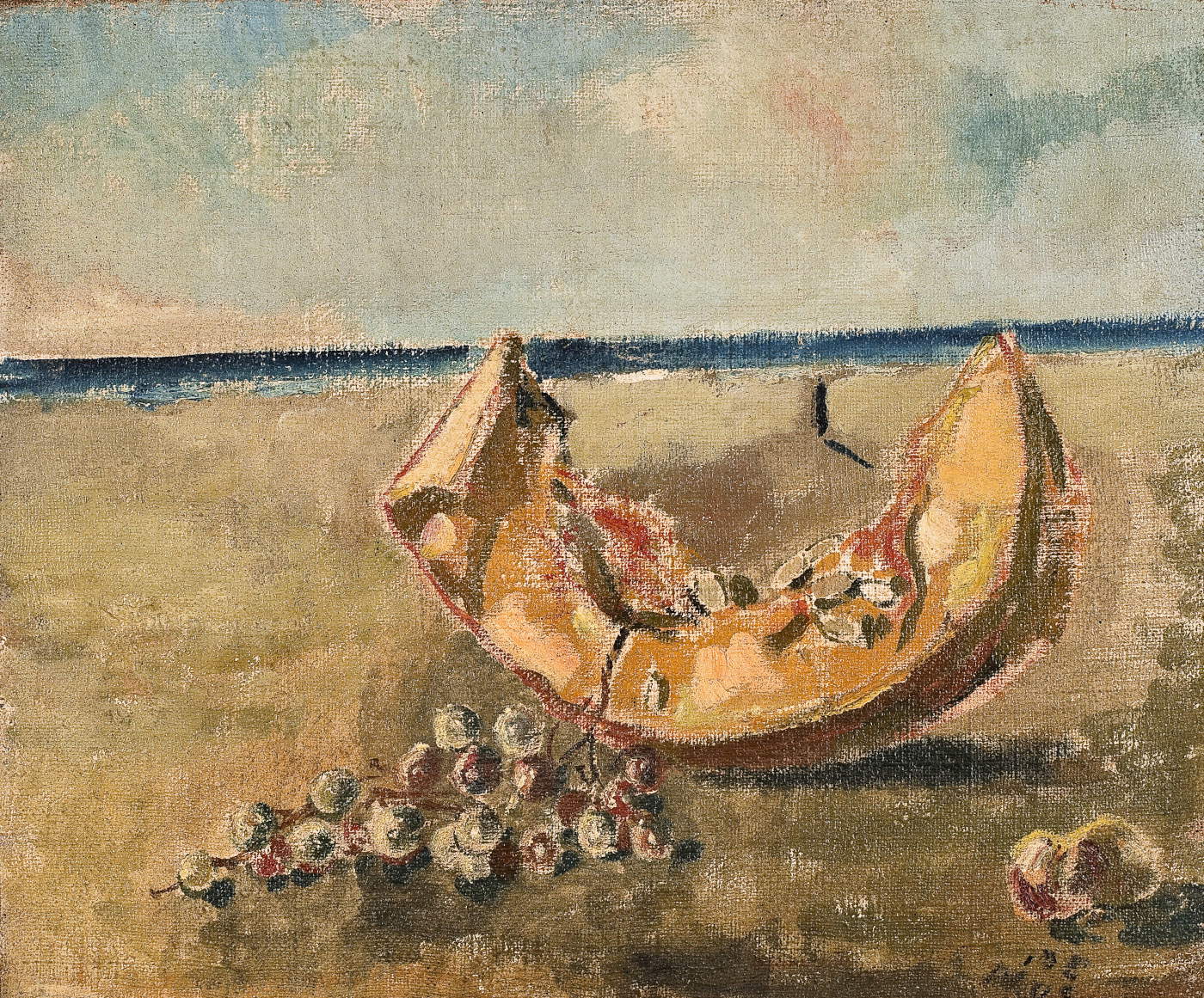From October 18, 2024 to January 17, 2025, the exhibition Filippo de Pisis. Birth of a Painting that will revolve around a small oil painting on canvas dated 1926, entitled Landscape, belonging to the artistic heritage of Unipol Group’s Corporate Museum. A painting where man meditates on his size in relation to the great power of nature. In fact, De Pisis welcomes, in each of his paintings, a reverberation of a symbolist nature that sees humanity held in deep communion with nature and the sensible.
Starting with this painting, curators Ilaria Bignotti and Maddalena Tibertelli de Pisis have selected about fifteen other paintings from theDe Pisis archive and from renowned national collections to place them in dialogue with a selection of his writings: Both in the form of diary pages and notes penned in Ferrara, then in Rome, Paris, Venice, and in the Brugherio clinic during the years of his neurosis, and in the form of critical and art historical thought that de Pisis elaborates in lectures and essays, articles and contributions, demonstrating his belief in the power behind every painting.
The exhibition project dedicated to Filippo de Pisis (Ferrara, 1896 - Milan, 1956), a protagonist of twentieth-century art, refined painter and man of letters, was born out of the collaboration with the Associazione per Filippo de Pisis, an archive and research center dedicated to the artist’s life and work, and intends to delve into some as yet unpublished aspects of his artistic research and cultural bearing, juxtaposing about fifteen paintings with literary, poetic and critical passages, by his own hand, selected from his writings.
The aim of the exhibition is also to try to bring to light another de Pisis, restless and profound, turned to a suffered investigation of the motions of the soul and psyche, placing himself in an empathetic confrontation precisely with the simplest and most everyday things and places. It is well known that many objects, some recurrently and with fascinating variations in shape and size, often stand out in his paintings: it is these iconographic and iconological elements of his painting that the exhibition wants to highlight, as tools to investigate the most intimate and complex aspect of the great artist.
“On the other hand, the choice to often favor humble, everyday subjects, even forgotten or quickly swallowed up by pressing modernity - junk dealer trinkets, fish recovered under market stalls, frayed coats hanging in delabré artist’s studios, baguettes and abandoned gloves - mixing them with the great motifs of Natura Morta, such as, first and foremost, flowers in all their guises, is a way of channeling the lens of attention to elements that become personifications and interpretations of the feelings of the Artist himself, undoubtedly revealing echoes of the naturalist symbolism of Giovanni Pascoli, among the poets beloved by de Pisis,” the curators comment.
Accompanying the exhibition is a catalog that, in addition to reproductions of all the works on display, includes exhibition views in the two museum venues and is enriched both by the contributions of the two curators and by a rich anthological selection of Filippo De Pisis’ writings.
For info: www.cubounipol.it
Hours: Monday from 2 to 7 p.m.; Tuesday from 9:30 a.m. to 10:30 p.m.; Wednesday, Thursday and Friday from 9:30 a.m. to 8 p.m.; Saturday from 9:30 a.m. to 2:30 p.m. Closed Sundays.
Free admission.
Image: Filippo de Pisis, Natura morta con fetta di melone (1927; oil on canvas, 53.5 x 64.5 cm)
 |
| An exhibition in Bologna places paintings and writings by Filippo de Pisis in dialogue |
Warning: the translation into English of the original Italian article was created using automatic tools. We undertake to review all articles, but we do not guarantee the total absence of inaccuracies in the translation due to the program. You can find the original by clicking on the ITA button. If you find any mistake,please contact us.